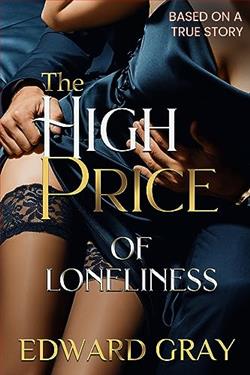Olinger grinned at Neis. “You can see how fraid I am.”
The Santa Fe deputy marshal said, “And now I hafta forget this conversation ever happened.”
* * *
The final forty miles along the Rio Grande to Mesilla took nine hours as the felons were locked into a hot, shuttered stagecoach with shotgunned guards bracketing them. Olinger told the Kid, “Your days are gettin short, Billy. Even now I can see that scratchy noose around your neck. You feel it chafing?”
The Kid just squinted out through the shutters.
There was the now-standard crowd waiting for the Kid’s arrival in the flatlands of Mesilla (Spanish for “table”), but as Wilson and Bonney squeezed out of the stagecoach a journalist was forced to ask, “Which of you is Billy the Kid?”
The Kid grinned as he aimed the gun of his thumb and finger at a waiting Ira Leonard and said, “That would be him.”
The journalist found that amusing enough to be recorded and then asked, “Are you looking forward to your day in court?”
The Kid said, “I’m looking forward to some of those famous green chiles you grow here. I hear they’re the best in the world.”
“Yes, they are.”
Billie Wilson was admiring the spires of the blue and majestic Organ Mountains to the east. “Aren’t they pretty,” he said. “There’s still snow!”
“And us without our sleds,” joked the Kid.
The journalist pressed on, asking, “Looking back on your life from this unfortunate vantage point, I wonder if you could tell our readers what you have learned?”
“Well,” the Kid said, “I would advise your readers to never engage in killing.”
The Kid remained the mixture of contradictions that had made him a heralded criminal, while Billie Wilson became so much an afterthought
that there was a continuance of his trial in Mesilla, and another continuance in Santa Fe. Even by September 1882, Wilson had not been tried, and he and two other prisoners managed to overcome a jail guard as he was locking their cell door, then ran up the stairway to the roof, from where they jumped far down to Water Street without grave injury. After Wilson had hitchhiked his way to Texas, he reassumed his original name of David Lawrence Anderson. He became a small-time rancher in Uvalde County, married and fathered two children, and just for old times’ sake he sought reacquaintance with Pat Garrett when he, too, moved to Uvalde, in 1891. Eventually Garrett graciously solicited a presidential pardon for Anderson from Grover Cleveland. Which in turn allowed Anderson to become a United States customs inspector and then the sheriff of Terrell County, where in 1918, at age fifty-six, Anderson was killed in the line of duty by a drunken friend.
* * *
The Third Territorial District Court’s spring meeting in Mesilla, the seat of Doña Ana County, was held in a whitewashed, windowless, fourteen-by-twenty-eight-foot room in a plain, one-story building that later would achieve garish fame as the Elephant Saloon. The judge was fifty-eight-year-old Warren Henry Bristol, who’d been appointed associate justice of the supreme court of New Mexico by President Ulysses S. Grant and since then had become a hanging judge, sentencing more men to the gallows than all his judicial peers combined. Bristol ought to have recused himself from the proceedings, for he was a close friend of L. G. Murphy and Jimmy Dolan and the fierce enemy of John Henry Tunstall and Alexander A. McSween. Yet on Wednesday, March 30, he called for Case number 411, The United States of America vs. Charles Bowdry, Dock Scurlock, John Middleton, George Coe, Frederick Wait, and Henry Antrim alias Kid, indicting them for the murder of Andrew L. “Buckshot” Roberts at Blazer’s Mill.
Ira Leonard, the Kid’s defense attorney, entered a not guilty plea in his contention that the United States government had no jurisdiction in the case, for the homicide had occurred on Dr. Blazer’s private island of real estate within the federal lands of the Mescalero Apache Indian Reservation. Judge Bristol considered the facts indicated on a government map and sustained the plea to quash the indictment with a declaration of nolle prosequi. But then he swiftly shifted to Cases 531 and 532 and Territory of New Mexico vs. William Bonney, alias Kid, alias Henry Antrim for the murders of Sheriff William Brady and his deputy George Hindman, on April Fools’ Day, 1878.
A journalist in the courtroom wrote, “Rather pleasant looking was Billy, wavy hair, baby blue eyes, sullen and defiant now, but looking as though they were made for laughter and sunshine and the reflection of the happy smiles of children. There was the mark of a keen intellect in that forehead, but there was also a mark of brutishness in his face, a criminal coarseness stamped across his features.”
The prosecuting attorney was Simon Newcomb, the friend of and successor to William Rynerson, who’d repudiated Wallace’s promise of clemency in the Kid’s first trial, in 1879. Witnesses against the Kid were Lincoln storeowner Isaac Ellis; Bonifacio Baca, whose college education had been funded by Major Lawrence Murphy; and the saloonkeeper who was Sheriff Brady’s deputy during the shoot-out, Jacob B. Mathews, the man who wounded Billy in the thigh.
Ira Leonard had subpoenaed Isaac Ellis for the defense and was perturbed to see him huddling with the prosecution. He’d also subpoenaed Robert Adolph Widenmann, who’d been with the gang in the Sheriff Brady killing, but he, of course, saw only jeopardy for himself in an appearance. And even though she probably would not have helped his case, Leonard subpoenaed Susan Ellen Hummer McSween, newly married to a semi-invalid named George B. Barber. She also failed to show.
She would soon buy a ranch she called Tres Rios, and, with a gift of livestock from her former fancier John Chisum, she became the aristocratic Cattle Queen of New Mexico, with fine clothes and a hatbox full of jewelry she carried with her everywhere. She ended a tempestuous marriage to George Barber in 1891, took on no more lovers, lost her wealth in the Crash of 1929, and in old age was shocked to find that the “foolish boy” she’d so disliked was increasingly featured in books and was the title character of the 1930 movie Billy the Kid, in which she was further irritated to see that her youthful feistiness in Lincoln was rendered by a lachrymose actress in her fifties. She died impoverished in White Oaks in January 1931, aged eighty-five.
* * *
Seeing no possible positive outcome and with no guarantee of payment from his penniless client, Ira Leonard soon left the Kid high and dry, his case being taken over instead by a helpless public defender who was first learning about the history and nature of the crimes as the prosecutor laid them out for the Mexican jury. None of his objections were sustained, and his cross-examinations were a welter of misinformation and stammering confusion.
Jacob Mathews’s testimony was the most damning, for, in noting that Sheriff Brady’s assailants were hidden behind an adobe wall, he was indicating that the homicide was premeditated, and, in claiming that he’d seen the Kid run out into Main Street with the others, he fitted Billy inside a conspiracy to kill that would have rendered him a killer even if he’d never fired a shot.
Called to the oaken witness chair by Simon Newcomb, the Kid promptly got up but was stalled by his attorney, who voiced the judicial rule that no defendant could be compelled to testify against himself.
The Kid plopped back down but whispered, “Are you sure of this? Looks bad.”
The public defender patted the Kid’s forearm in a patronizing gesture equivalent to tut tut.
Old Isaac Ellis was called forward and was asked if the Kid was a prodigious shot.















